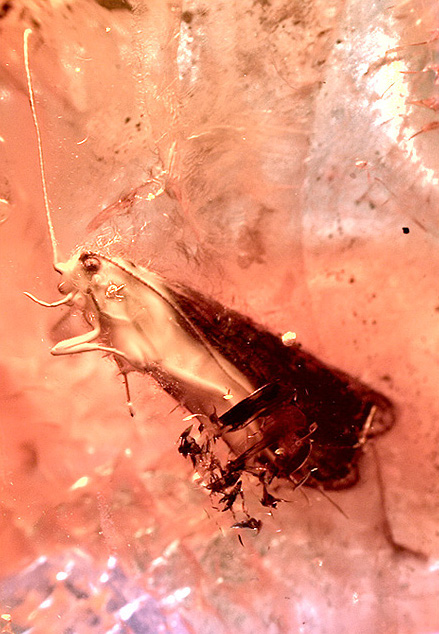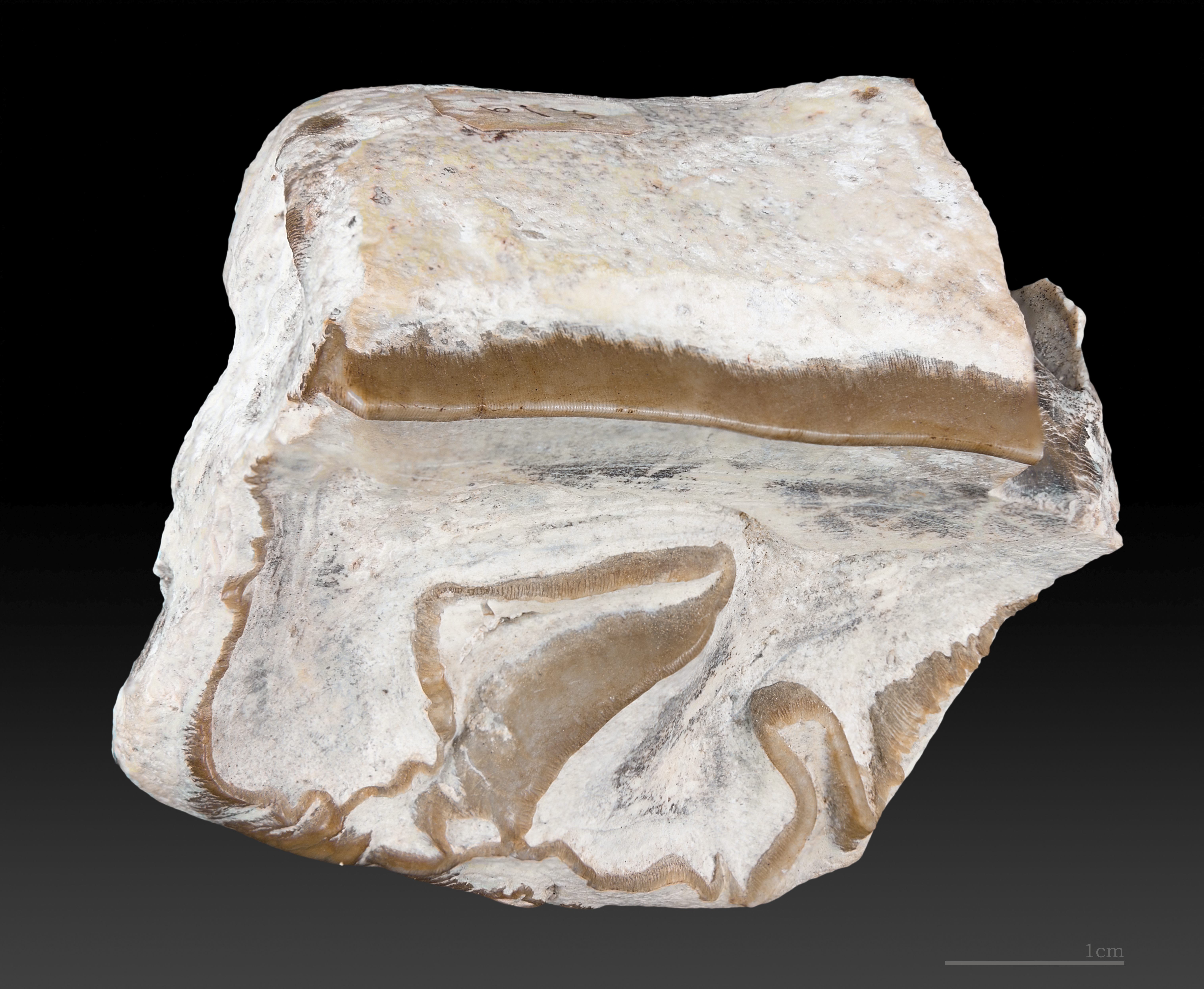|
Anisocentropus Krampus
''Anisocentropus krampus'' is a species of caddisfly in the family Calamoceratidae. It was Species description, described in 1994 by Austrian entomologist and found in New Britain. Name Malicky did not specify an etymology. However as other new species described in the same Scientific paper, paper, such as ''Ganonema dracula'' and ''Anisocentropus golem'', seem to reference monsters from central Europe such as Count Dracula and the golem, the specific epithet likely refers to Krampus. Description The distinguishing features of this species are the colorful wings and the male external copulatory organs, especially the laterally protruding lobes of the 10th segment. The designs on the forewing in particular is one of the distinguishing characteristics for this and other related species. The thorax, head, and appendages are light brown with golden yellow hairs. The antennae also are covered in the same gold hairs. The abdomen is dark brown. The forewings are also golden yello ... [...More Info...] [...Related Items...] OR: [Wikipedia] [Google] [Baidu] |
Caddisfly
The caddisflies (order Trichoptera) are a group of insects with aquatic larvae and terrestrial adults. There are approximately 14,500 described species, most of which can be divided into the suborders Integripalpia and Annulipalpia on the basis of the adult mouthparts. Integripalpian larvae construct a portable casing to protect themselves as they move around looking for food, while annulipalpian larvae make themselves a fixed retreat in which they remain, waiting for food to come to them. The affinities of the small third suborder Spicipalpia are unclear, and Molecular phylogenetics, molecular analysis suggests it may not be monophyletic. Also called sedge-flies or rail-flies, the adults are small moth-like insects with two pairs of hairy membranous insect wing, wings. They are closely related to the Lepidoptera (moths and butterflies) which have scales on their wings; the two orders together form the superorder Amphiesmenoptera. The aquatic larvae are found in a wide variety o ... [...More Info...] [...Related Items...] OR: [Wikipedia] [Google] [Baidu] |
Hindwing
Insect wings are adult outgrowths of the insect exoskeleton that enable insects to fly. They are found on the second and third thoracic segments (the mesothorax and metathorax), and the two pairs are often referred to as the forewings and hindwings, respectively, though a few insects lack hindwings, even rudiments. The wings are strengthened by a number of longitudinal veins, which often have cross-connections that form closed "cells" in the membrane (extreme examples include the dragonflies and lacewings). The patterns resulting from the fusion and cross-connection of the wing veins are often diagnostic for different evolutionary lineages and can be used for identification to the family or even genus level in many orders of insects. Physically, some insects move their flight muscles directly, others indirectly. In insects with direct flight, the wing muscles directly attach to the wing base, so that a small downward movement of the wing base lifts the wing itself upward. Thos ... [...More Info...] [...Related Items...] OR: [Wikipedia] [Google] [Baidu] |
University Of Copenhagen Zoological Museum
The Copenhagen Zoological Museum ( Danish: ''Zoologisk Museum'') was a separate zoological museum in Copenhagen, Denmark. It is now a part of the Natural History Museum of Denmark, which is affiliated with the University of Copenhagen. The separate museum location closed in 2022, but will reopen in 2025 (as part of the combined Natural History Museum) in new and considerably larger buildings in the northeastern corner of the Copenhagen Botanical Garden. Although the museum will be relocated, the research and storage facilities at its old location have been maintained. History The Zoological Museum is among the world's oldest natural history museums, as its collection was started by Ole Worm more than 350 years ago, although it was officially founded in 1862. Collections The zoological collections contains about 14 million specimens. The history of the collections reach back in time more than 200 years. Apart from rich collections of Danish animals, the museum has particular ... [...More Info...] [...Related Items...] OR: [Wikipedia] [Google] [Baidu] |
Paratype
In zoology and botany, a paratype is a specimen of an organism that helps define what the scientific name of a species and other taxon actually represents, but it is not the holotype (and in botany is also neither an isotype (biology), isotype nor a syntype). Often there is more than one paratype. Paratypes are usually held in museum research collections. The exact meaning of the term ''paratype'' when it is used in zoology is not the same as the meaning when it is used in botany. In both cases however, this term is used in conjunction with ''holotype''. Zoology In zoological nomenclature, a paratype is officially defined as "Each specimen of a type series other than the holotype.", ''International Code of Zoological Nomenclature'' In turn, this definition relies on the definition of a "type series". A type series is the material (specimens of organisms) that was cited in the original publication of the new species or subspecies, and was not excluded from being type material ... [...More Info...] [...Related Items...] OR: [Wikipedia] [Google] [Baidu] |
Holotype
A holotype (Latin: ''holotypus'') is a single physical example (or illustration) of an organism used when the species (or lower-ranked taxon) was formally described. It is either the single such physical example (or illustration) or one of several examples, but explicitly designated as the holotype. Under the International Code of Zoological Nomenclature (ICZN), a holotype is one of several kinds of name-bearing types. In the International Code of Nomenclature for algae, fungi, and plants (ICN) and ICZN, the definitions of types are similar in intent but not identical in terminology or underlying concept. For example, the holotype for the butterfly '' Plebejus idas longinus'' is a preserved specimen of that subspecies, held by the Museum of Comparative Zoology at Harvard University. In botany and mycology, an isotype is a duplicate of the holotype, generally pieces from the same individual plant or samples from the same genetic individual. A holotype is not necessarily "ty ... [...More Info...] [...Related Items...] OR: [Wikipedia] [Google] [Baidu] |
Papua New Guinea
Papua New Guinea, officially the Independent State of Papua New Guinea, is an island country in Oceania that comprises the eastern half of the island of New Guinea and offshore islands in Melanesia, a region of the southwestern Pacific Ocean north of Australia. It has Indonesia–Papua New Guinea border, a land border with Indonesia to the west and neighbours Australia to the south and the Solomon Islands to the east. Its capital, on its southern coast, is Port Moresby. The country is the world's third largest list of island countries, island country, with an area of . The nation was split in the 1880s between German New Guinea in the North and the Territory of Papua, British Territory of Papua in the South, the latter of which was ceded to Australia in 1902. All of present-day Papua New Guinea came under Australian control following World War I, with the legally distinct Territory of New Guinea being established out of the former German colony as a League of Nations mandate. T ... [...More Info...] [...Related Items...] OR: [Wikipedia] [Google] [Baidu] |
Gazelle Peninsula
The Gazelle Peninsula is a large peninsula in northeastern East New Britain, Papua New Guinea located on the island of New Britain within the Bismarck Archipelago, situated in the southwestern Pacific Ocean. The Rabaul caldera is located on the northern tip of the peninsula. Upon the Gazelle Peninsula are the Baining Mountains, of which the highest point is Mount Sinewit at . The Gazelle Peninsula houses Vulcan Crater and Mount Tavurvur, both of which conducted volcanic activity in the 20th and 21st centuries and have provided extremely fertile soils. The body of the Gazelle Peninsula is about . The southern isthmus upon which the Gazelle Peninsula is connected to the main body of East New Britain is reduced to about . The Editors of Encyclopædia Britannica, (2015). Gazelle peninsula. Retrieved April 23, 2019 from https://www.britannica.com/place/Gazelle-Peninsula History The Tolai people of the peninsula probably colonised the peninsula from New Ireland not long befo ... [...More Info...] [...Related Items...] OR: [Wikipedia] [Google] [Baidu] |
Type Locality (biology)
In biology, a type is a particular wikt:en:specimen, specimen (or in some cases a group of specimens) of an organism to which the scientific name of that organism is formally associated. In other words, a type is an example that serves to anchor or centralizes the defining features of that particular taxon. In older usage (pre-1900 in botany), a type was a taxon rather than a specimen. A taxon is a scientifically named grouping of organisms with other like organisms, a set (mathematics), set that includes some organisms and excludes others, based on a detailed published description (for example a species description) and on the provision of type material, which is usually available to scientists for examination in a major museum research collection, or similar institution. Type specimen According to a precise set of rules laid down in the International Code of Zoological Nomenclature (ICZN) and the ''International Code of Nomenclature for algae, fungi, and plants'' (ICN), the ... [...More Info...] [...Related Items...] OR: [Wikipedia] [Google] [Baidu] |
Gondwana
Gondwana ( ; ) was a large landmass, sometimes referred to as a supercontinent. The remnants of Gondwana make up around two-thirds of today's continental area, including South America, Africa, Antarctica, Australia (continent), Australia, Zealandia, Arabian Peninsula, Arabia, and the Indian subcontinent. Gondwana was formed by the Accretion (geology), accretion of several cratons (large stable blocks of the Earth's crust), beginning with the East African Orogeny, the collision of India and Geography of Madagascar, Madagascar with East Africa, and culminating in with the overlapping Brasiliano orogeny, Brasiliano and Kuunga orogeny, Kuunga orogenies, the collision of South America with Africa, and the addition of Australia and Antarctica, respectively. Eventually, Gondwana became the largest piece of continental crust of the Paleozoic Era, covering an area of some , about one-fifth of the Earth's surface. It fused with Laurasia during the Carboniferous to form Pan ... [...More Info...] [...Related Items...] OR: [Wikipedia] [Google] [Baidu] |
Species Group
In biology, a species complex is a group of closely related organisms that are so similar in appearance and other features that the boundaries between them are often unclear. The taxa in the complex may be able to hybridize readily with each other, further blurring any distinctions. Terms that are sometimes used synonymously but have more precise meanings are cryptic species for two or more species hidden under one species name, sibling species for two (or more) species that are each other's closest relative, and species flock for a group of closely related species that live in the same habitat. As informal taxonomic ranks, species group, species aggregate, macrospecies, and superspecies are also in use. Two or more taxa that were once considered conspecific (of the same species) may later be subdivided into infraspecific taxa (taxa within a species, such as plant variety (botany), varieties), which may be a complex ranking but it is not a species complex. In most cases, a specie ... [...More Info...] [...Related Items...] OR: [Wikipedia] [Google] [Baidu] |



